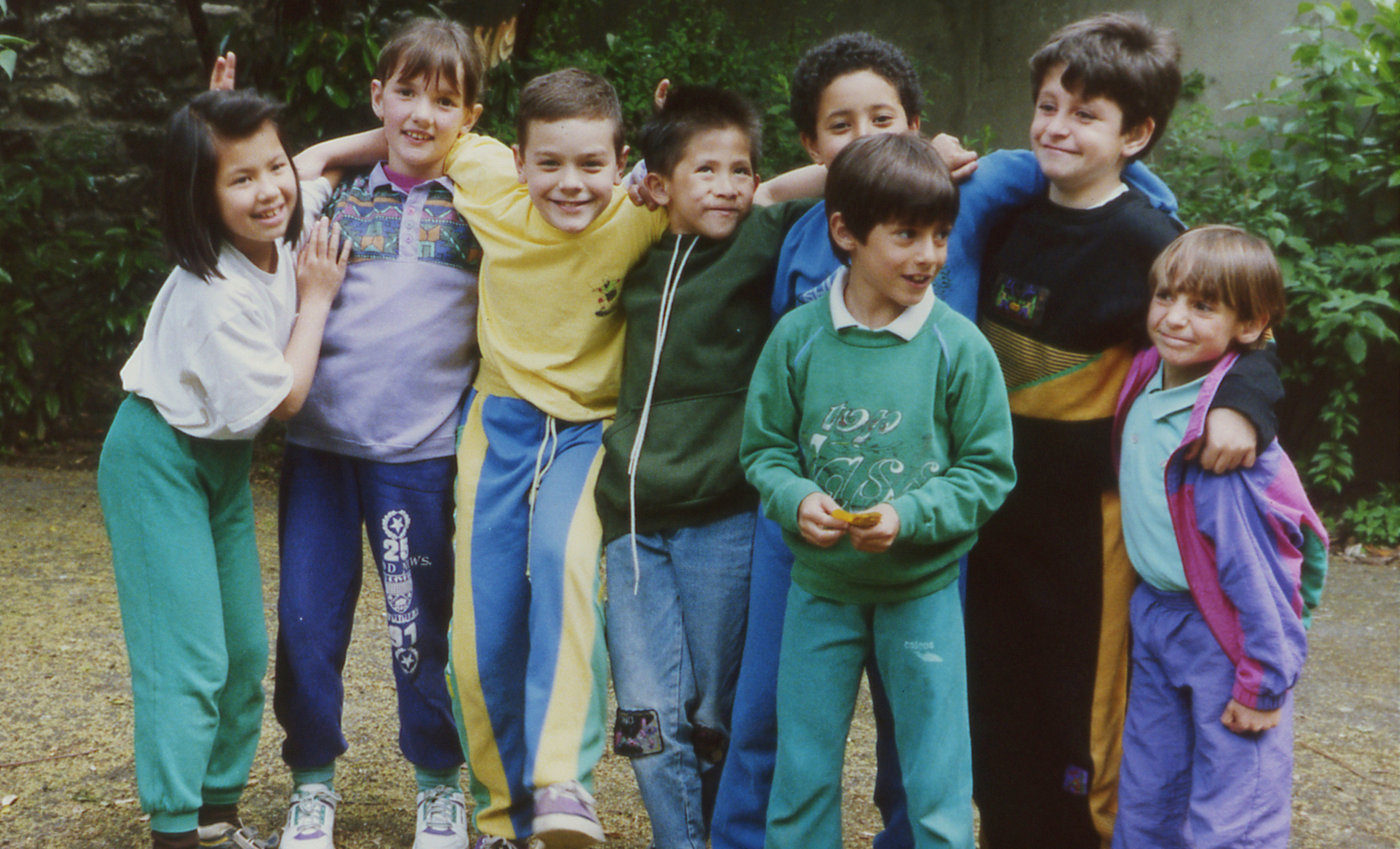An Eloquent Silence
Richard Harrington / The Washington Post – October 7, 1994
Nicolas Philibert’s award‑winning French documentary In the Land of the Deaf does much to dissolve borders of ignorance that keep the hearing from appreciating the culture and the language of a constituency (130 million strong worldwide) that might be more easily recognized if it were ethnically or racially defined, or perhaps had its own cuisine.
But this sensitive documentary makes it clear that the deaf are, in all but one sense, no different from any other group, embracing the same range of personalities, sharing the same dreams, experiencing the same emotions. Like any group with a crucial commonality, the deaf are also unique.
Philibert approaches their world in a surprisingly sensible manner, letting his subjects sign for themselves. There is no intrusive narration and no heavyhanded polemic, just the observed expression of children learning to speak, a young couple getting married and a marvelous teacher of sign language with time and memories on his hands.
Jean‑Claude Poulain, who teaches sign language to hearing adults, provides both historical context and insights into complexities of deaf culture. The fiftyish Poulain recalls that when he was a child, his hands were tied behind his back in an effort to make him talk; now Poulain is a quiet crusader in the deaf‑rights movement, pushing for bilingual education (French/sign). Blessed with a poignant Jacques Tati face that reflects immense passion and pathos, Poulain is a story‑signer of the highest order. At one point, referring to his hearing daughter, he confesses, “I had dreamt of having a deaf child ‑ communication would be easier. But I love her all the same.”
Offhanded but revealing, that twist is repeated later when a young man in a bar signs family history, noting that he comes from five deaf generations that have included the occasional hearing child (“poor thing”). The more common situation of deaf children born into hearing families is revealed in the recollections of several college‑age kids who grew up feeling excluded.
But Philibert (who is not deaf) is not out to demonize the hearing. The only villain here is ignorance. Philibert suggests the complexities of both emotions and politics in the world of the deaf, and some of the film’s most poignant moments capture the interaction of teachers and youngsters struggling patiently to create public sound out of private silence.
All the kids are engaging, but one in particular, 6‑year‑old Florent, is a genuine heartbreaker. Blessed with huge, inquisitive eyes, Florent is first seen struggling with a tear‑drenched writing assignment; at film’s end, though, he’s revealed as a playful, loving and loudly mischievous child, dealing with his condition, not burdened by it. “I look so I can hear,” Florent explains, and you understand why he’s been blessed with those eyes.
The importance of sight and sightlines is apparent. After all, sign language is a matter of hand‑eye cooperation. Every gesture tells a story, and Philibert captures the rush of signs, the liquid loquaciousness of chattering hands, the body French of subjects whose mode of expression is as varied, lively, intense, rich and witty as any with sound attached.
And, Poulain explains, there’s a practical edge to consider: There may be different dialects of sign language around the world ‑ he signs specific examples ‑ but common grounds allow for quicker communion than might be possible for the hearing, with their disparate languages. In this documentary, there is sign language, spoken French and English subtitles that cover the first two elements. And gradually, it is the sign language that comes to seem clearest, demystified by Philibert’s respectful attention and empathy.
There’s one other charming tableau involving a young deaf couple, Hubert and Marie‑Helene (95 percent of the deaf marry within the culture). Philibert captures their wedding, where natural nervousness is heightened by the challenge of an essentially literary ritual, and later includes their apartment search (made difficult because of intense communication problems with a landlord) and the arrival of a baby. But the traditions and centeredness of the deaf community are most apparent in a scene from the wedding party, which includes both deaf and hearing folk, and features loud music and dancing. At one point the music stops, but Hubert and Marie‑Helene keep on dancing, secure in themselves and their silent world.
